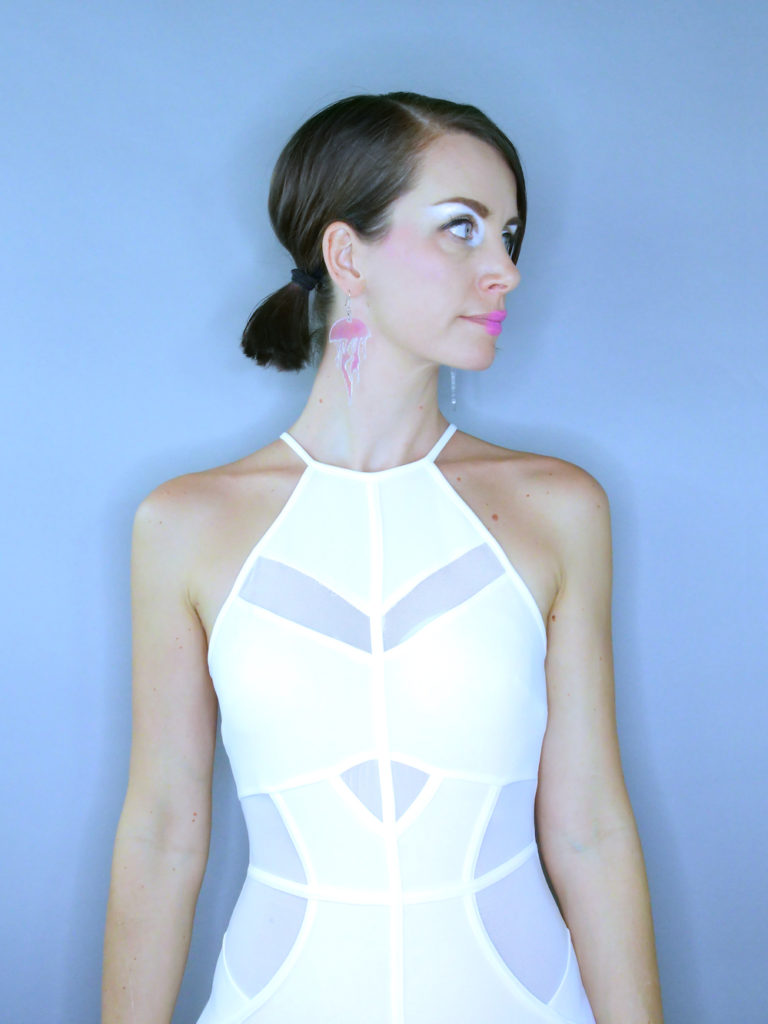


 +2
+2 Technology and design connected to the body have the potential to observe our data, to visualize it, to turn it back in emotion and to remind us of our profound connections.
Anouk Wipprecht

Our brains receive a massive amount of data as inputs from our senses: vision, hearing, smell, taste, and touch, which includes countless receptors in our skin and bodies. With these inputs our brains produce our every thought, action, memory, feeling and experience of the world. Uncovering how the human brain works has been for long one of the biggest mysteries in science. The average human brain contains about 86 billion nerve cells, called neurons. Neurons communicate with each other by sending chemical and electrical signals. These neurons, communicate with each other in unique ways, woven together by an estimated 100 trillion connections, or synapses. The brain is one of the most complex systems in nature that unites the entire human body.
Yet for all this complexity, the outputs of the brain are basically limited to what we can do with our muscles: speech and movement. For some people with paralysis this is not an option, and science has sought new ways for their brains to communicate, while observing their brain activity directly through EEG. This science creates interesting applications for people without paralysis as well, opening the possibility of visualizing the brain’s activity directly, expanding our ability to express our inner minds-capes and connect to each other in new ways. It is not hard to imagine that the Internet, which is already something like a single human meta-brain, will continue to evolve to connect our brains more and more directly.
I have been intervening myself with the field of EEG for the last couple of years, and mostly through art and technology collaborations with neuroscientists, research institutes, and neurotechnology companies. But also through the OpenBCI community; a free, open-source community that unites whoever is interested in this topic. I would strongly recommend looking them up if you are interested in this topic.
The brain has always been fascinating to me, coming from a coding and electronics background. I love how things are wired and communicate. My first piece, ‘Synapse’ (2014) in collaboration with semiconductor company Intel combined EEG measurements with heart rate and cameras in an on-body system. My second piece ‘Agent-Unicorn’ (2016) tackled ADHD in children and is a BCI (Brain Computer Interface) in the shape of a unicorn horn with an embedded camera in collaboration with g.tec for Ars Electronica.
Through the above named projects I started to understand the impact that EEG technologies can make to benefit humanity in new ways. Currently, the technologies surrounding us are not listening to our bodies very well, only to our fingertips. Our agendas are not sensitive to our natural rhythms and I cannot hug my family yet over a distance. How can technology unite us further than it does now?
The question for us remains: does technology bring us closer? We assume yes. But does it really? In a world where we’re supposedly more connected than ever before, and we can communicate with people around the world at the snap of a finger – we have unlimited digital distractions but a lingering human loneliness. New technologies that listen to the body can help us navigate new techno-uniting ways.
Designs that can connect to our skin and unite our bodies in an non-invasive way can pave the way to learn about our actions, and designs that are connected to your mind might be able to sense us in new ways. That is for me the excitement – where will these new electronic futures take us?
This year I teamed up with Johannes Keppler University Linz (JKU) and once again NeuroTechnology company g.tec (Linz, Austria) and in particular Christoph Guger, Thomas Faseth and Harald Pretl, and we started a new collaboration: a system from their side combined with a robotic dress by my hand that records and displays the data from your mind. The Pangolin Scales System that has been developed for this project uses EEG to observe the brain and the dress, in turn, reacts to the input signals from the brain and visualizes this data through motion and light corresponding to each of 1024 data points.
This input – output situation and feedback loop gives us more insight to evaluate and research the electrical activity within the brain as it not only tracks and records brain wave patterns but also visualizes it in real time through the dress. The dress works through 1024 channels, over 64 PCB’s connected to the head, to 64 outputs on the dress: servo’s and lights. When the mind is in full function, the dress displays itself like a twinkling galaxy, and turns purple in color the more a deep ‘mind-state’ is reached.
Throughout history people have sought to unlock the secrets of the human mind. Neuroscience has never been so powerful and given us so many options for connecting directly to the brain. Technology and design connected to the body have the potential to observe our data, to visualize it, to turn it back in emotion and to remind us of our profound connections.
IG: anoukwipprecht
Photography Yanni de Melo | Make-up Veronica Lopez | Model Daliette Jean

















